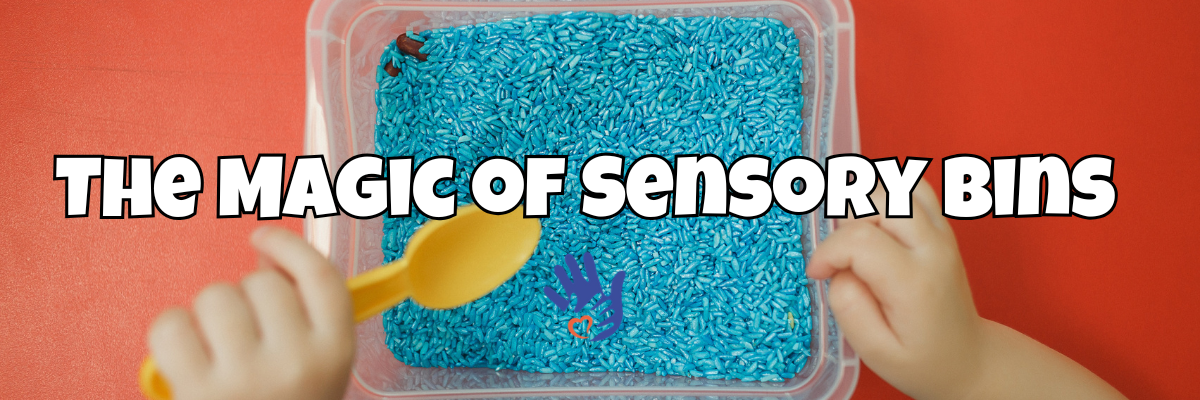Why Is Mealtime So Important For Children?
The 3 most important things for humans to survive is: food, water and oxygen. For some parents, the concern for their kiddos health and well-being becomes heightened when they notice their kiddo isn’t eating as much food or as many types of foods as they may have at one time. Some kiddos who are referred to Occupational Therapy are considered “Picky Eaters” and others may be referred to as a “Problem Feeder”. We all know a picky eater. This is a person/kiddo who has at least 30 foods in their repertoire. Whereas a “Problem Feeder” is a person/kiddo who has less than 20 foods in their repertoire. There are many reasons this could happen such as trauma, sensory related challenges, anxiety, behavioral challenges, and more. As Occupational Therapists, we are trained to assist these kiddos by addressing these challenges which can increase their tolerance for trying new foods! Keep reading to learn more picky eater tips we have below!
So why is MEALTIME so important to assist with this?
One of the first things we will ask as OTRs or COTAs is “What does mealtime look like at home?” Some parents may say,
“We all sit down as a family every night for dinner but we are busy or gone for breakfast and lunch”, “We are so busy that we are lucky to eat all at the same time”, or “(The child) eats all day but won’t eat the food I cook at dinner”. Of course these are just examples, but can you relate to any of them? It’s a possibility!
Asking about mealtimes is very important to your therapist because this gives us an idea of how your child eats during the day. Kiddos need fuel to keep their bodies going. However, WHAT they are taking in and HOW/WHEN they are taking it in will make a huge difference in behavior, attention, ability to process/retain information and regulate emotions/emotional responses. To give you an idea of why the “what”, “how” and “when” are so important, I’ll follow up on the questions above.
1. “We all sit down as a family every night for dinner but we are busy or gone for breakfast and lunch”
This could be a beneficial time to incorporate feeding techniques and build interest in the foods around the table. Interest always comes before action. A child must first be interested in the food before they will interact with it. This is one reason that mealtime is so important for kiddos. It can be an opportunity to build interest in various smells, sights, and textures of foods provided by parents in a supportive and positive manner.
2. “We are so busy that we are lucky to eat all at the same time”
How can you work your schedule to have a least one meal together every other day? We understand that this busy world requires busy people to keep it going. However, when you are overwhelmed and exhausted your child may pick up on that. Children are very intuitive. Incorporating as many mealtimes as possible may assist with parent/child interaction and decreasing anxiety and overwhelming emotions in adults which can in turn make eating less stressful for a “picky eater”.
3. “(The child) eats all day but won’t eat the food I cook at dinner”
Grazing is when a kiddo eating little snacks all throughout the day. Have you ever seen a child leave a snack on the table, go play for 30 minutes, then return to finish the snack? If your child is doing this all day, it may explain why they are not eating at mealtimes. Typically, the brain lets us know when we need to refuel because the digestive system sends signals saying, “I’m empty in here!”. When grazing, a child’s brain will begin to have a hard time distinguishing when the child is hungry due to constantly having food in the digestive system. This can effect metabolism and the ability to regulate hunger. When given mealtimes, the body has time to regulate, digest and filter out what it needs for fuel. Additionally, if given processed snacks that are high in sugar or carbohydrates throughout the day, the body will begin to crave them. This can create a difficult loop to break when introducing thing like vegetables, meats and some fruits. Positive interactions at mealtimes can assist with parent/child interactions, lowering anxiety and stress levels, giving the child’s body time to process what it needs for fuel and providing learning opportunities for the sensory system. This can be a major changing factor in how your child engages with food!
Additional Mealtime Picky Eater Tips
Picky Eater Tips #1: Don’t force foods on children
As parents, we want our children to eat a variety of foods, including vegetables, fruits and other healthy snacks to help them grow to be strong and healthy. Studies show that forcing a child to sit and eat until they have cleared their entire plate is not the best method for achieving this goal. Instead, parents should promote foods that may have not been a hit the first time around. You can model this yourself by trying a food you haven’t liked in the past, and explain that you’re giving it another chance because your tastes may have changed. We want to show kids that we are adaptable. Remember: It can take as many as 10 or more times tasting a food before a toddler’s taste buds accept it.
Picky Eater Tips #2: Get Creative With Food Bingo
You can also put together a list of new foods for the family to try and make a game out of it—what will we try tonight? You can make it interactive and fun by doing something creative like Food Bingo. There are many free printable online similar to the image shown below. You can even make your own! Hang it on the fridge and have your child place a sticker or check off the new foods they have tried. You can even add in a reward for them getting “bingo” – a trip to their favorite place, a new toy, a play date, or something else they really enjoy!
Picky Eater Tips #3: Don’t Make a Second Meal
When you serve a meal to your family and your kiddo refuses to eat it, we recommend having simple and consistent back up options, such as yogurt, a cheese, nut & fruit snack pack, apple sauce, cereal etc. It’s important for children to know that if they can not eat the meal you have prepared, they will receive the standard option – rather than the usual chicken nuggets baked quickly in the oven. We should also teach kids that a meal isn’t ruined if it comes in contact with something they don’t like. Finding an unwanted pickle on your cheeseburger will not contaminate it. Children should be encouraged to push food they don’t like off to the side, or onto another plate, or offer to share it with someone else.
Picky Eater Tips #4: Involve Your Kiddo in the Meal Prep Process
Some cooking tasks are perfect for toddlers and small children (with supervision, of course): sifting, stirring, counting ingredients, picking fresh herbs from a garden or windowsill, and “painting” on cooking oil with a pastry brush. Allowing our children to interact with the foods they are going to eat will help to promote and encourage them to try it!
Picky Eater Tips #5: Food Chaining
Once your kiddo tries a new food and that food is accepted, use what one our Occupational Therapist’s favorite pickle eater tips call “food chaining” to introduce others with similar color, flavor and texture to help expand variety in what your child will eat. Children with sensory concerns have difficulty with leaping from the types of food they are willing/able to eat. Food chaining builds a bridge to get to those foods you really want your child to eat one step at a time through links to food they’re already eating. Examples include:
- If your child likes pumpkin pie, for example, try mashed sweet potatoes and then mashed carrots.
- If your child loves pretzels, try veggie straws next, and then move on to baby carrots or carrot sticks. Carrots are hard, crunchy, and stick shaped, but are cold and have a different taste.
- If your child loves French Fries, then give a try to Zucchini fries.
- Move from cookies to Fig Newtons, to jam toast, to jam sandwich, to bread with sliced strawberries, and lastly to fresh strawberries
- If chicken nuggets are the fan favorite, try to first change the brand of nuggets, then move to homemade chicken nuggets, then to homemade tenders, and lastly to a baked chicken breast.
- Maybe your kiddo love goldfish crackers. Next give Cheeze Itz a try, and then move on to saltine crackers, and lastly to saltines with cheese slices.
How Can Carolina Therapy Connection Help?
In addition to utilizing the tips above at home, we know that sometimes children need an extra push to expand their food repertoire. At Carolina Therapy Connection, our occupational and speech therapists provide feeding therapy that uses a collaborative approach to work closely with you and your child to determine the source of a child’s feeding difficulties, and develop specific intervention plans to make the entire eating process easier and more enjoyable. Often times, feeding therapy happens on a weekly basis and may consist of working on difficulty with trying new foods, chewing, swallowing, sensory issues, irritability at meal time and so much more. Our goals are to broaden your child’s scope of foods, teach them the benefits of healthy eating, and develop oral motor skills needed for optimal growth and nutrition.
Our Occupational Therapists take a sensory-based feeding approach to therapy. They focus on: oral motor skills, sensory sensitivities, progressing through food textures, and using adaptive equipment and tools to develop self-feeding skills. They also use a process called food chaining, which is a child-friendly treatment approach that helps introduce new foods while building on the child’s past successful eating experiences. In this process, the child is presented with new foods that may be similar in taste, temperature, or texture to foods the child already likes and accepts. Our occupational therapists are certified in the SOS Feeding Approach, a nationally and internationally recognized approach for assessing and treating children with feeding difficulties.
Our feeding therapists have 15-20 years of experience with children of all ages and a variety of feeding disorders. They have certifications in SOS and AEIOU approaches and significant training from around the country on feeding approaches, treatment strategies, and focused plans. We also having consistent collaboration with other professionals in the community to guarantee the best care. Call our clinic at 252-341-9944 for a free phone screening with one of our feeding therapists and schedule an evaluation today!
Blog Written By: Shelby Godwin, COTA/L, AC & Morgan Foster, MS, OTR/L























